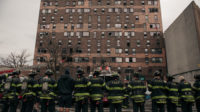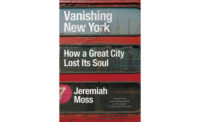This book, about the radical transformation of New York in the early 20th century, makes you exclaim of the result, “Nothing’s changed!” For today’s New Yorkers, the names of the main players in that metamorphosis are part of daily life, if only because of Rockefeller Center and Carnegie Hall, not to mention J.P. Morgan Chase banks everywhere. Less obviously but more consequentially, New Yorkers of Morgan’s class and era invented the American corporation and engendered the structures of government that support its power. The primary reason the boroughs were consolidated into New York City—the celebration of which, in 1898, opens the book—was essentially so that these robber barons could have more efficient hegemony over their means of shipping (the harbor in particular), much as they had amalgamated myriad companies in order to centralize and control their copper, sugar, steel, or railroad businesses.
This volume, a sequel to the Pulitzer Prize—winning Gotham: A History of New York City to 1898, which covered 375 years, uses nearly as many pages for its 21. The book’s many sections range in topic from commercial-political finagling to the changes in planning and building type that resulted, as well as to public transportation, including bridges and tunnels; zoning; housing; factories; retail; and cultural centers from libraries to opera houses. Greater Gotham also goes into popular culture, crime, and the organization of labor. Reformers, radicals, and feminists are not neglected either. It ends with the aftereffects of World War I.
The plutocrats’ most visible effect was the skyscraper, which they made the iconic building type of the city in this period. Though high-rise structures also developed in Chicago, their rampant growth in New York was a means of branding for the gargantuan corporate businesses. And as residences became vertical, such development increased the value of real estate—which in turn became an outsize force on city government. The same fights were being fought then as now, of preservationists versus developers and the pols who enabled them; of those who wanted zoning to shape the city for beauty and ease of living and those who wanted it bent in the direction of immediate monetary profit—“capitalist urbanism undermining civic patriotism,” as Wallace puts it. The Municipal Arts Society, still engaged today on the civic side of these battles, has been at it for more than a century.
Though beautifully organized, and written with grace and humor, the author does not build stories so much as compile compendious chronologies. The pictures are as skillfully researched as the text but convey their information with considerable punch, as with a photograph of little boys playing on the curb next to a dead horse (ca. 1903) or a shot of Ota Benga, an African Pygmy who found himself exhibited in a Bronx Zoo cage, with a baby orangutan. These tell stories indeed— and, thankfully, are a measure of some change for the better.





